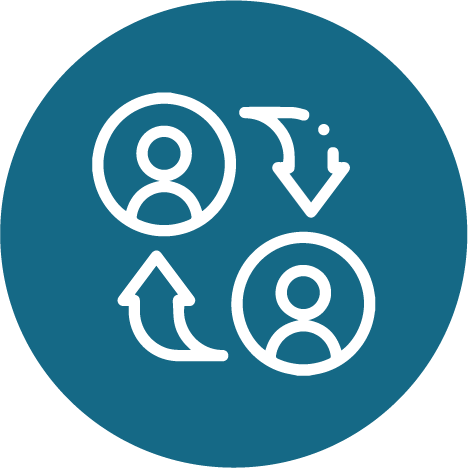Sustainable Hospitality Initiative
Through educating, empowering and enabling the hospitality industry in improving business practices via impactful partnerships and industry collaborations, we, jointly with our stakeholders, aspire to drive transformational changes in the Malaysian market towards sustainability.
WWF-Malaysia is committed to empower businesses in the hospitality industry to take steps towards sustainability by increasing sustainable seafood sourcing, reducing food waste, eliminating single-use plastics, and switching to Forest Stewardship Council (FSC) certified paper.
We encourage hospitality businesses and professionals to incorporate sustainability in their daily operations and duties as well as taking action to improve business practices in the long-term. Get in touch with us to explore how we can work together to help you improve operations across various sustainability areas.
To kick-start your seafood sustainability journey, start exploring what you can do to ensure seafoods are sourced responsibly. Scroll down and choose your role to find out more.

 TOP MANAGEMENT
TOP MANAGEMENTIn brief, this is the list of actions Top Management can take:
- Enable your procurement team to conduct a simple assessment of seafood supply.
- Commit to capacity building training for internal staff. This will ensure awareness and expertise around threats of commercial seafood trade to the environment and society, as well as your sustainable seafood strategies and commitment.
- Support the development of a holistic sustainable seafood policy – that includes setting up responsible procurement criteria for seafood.
- Support local sustainable production projects financially.
- Reach out to WWF-Malaysia for support in becoming a champion in seafood sustainability.
Learn more about these actions:
As leaders and key-decision makers, the top management enables the development of the business’s sustainable seafood commitment, which ultimately drives seafood sustainability. The commitment involves trained staff teams who follow a sustainable seafood policy that addresses the following aspects:
- The business is able to recognise the challenges facing the sustainable seafood trade and impacts of commercial seafood trade;
- Clear definition of what the business regards as sustainable seafood and the responsible procurement criteria it aims to implement;
- Commitment to specific, measurable, achievable, realistic and time-bound goals by which the business aims to offer sustainable seafood – this can be done in stages.
What’s in it for the business? Read about TOP 5 BUSINESS BENEFITS FOR SAYING YES TO SUSTAINABLE SEAFOOD. Get in touch with us for training support, resources or interest in a partnership.

 PROCUREMENT
PROCUREMENTIn brief, this is the list of actions Procurement can take:
- Conduct a simple sustainability assessment of your seafood portfolio.
- Track and trace seafood along the supply chain – from farm/ocean to the point of purchase/receiving.
- Learn about, develop and implement responsible procurement criteria.
- Engage suppliers to demand for seafood from sustainable sources.
- Request WWF’s Responsible Seafood Purchasing Guide.
Learn about these actions:
To get a general idea of the status quo of the business’ seafood sustainability status, you can refer to the Save Our Seafood (S.O.S) Guide to conduct a simple assessment of your current seafood portfolio. This assessment will help businesses to focus on improving procurement, e.g. by avoiding sourcing of species at risk and opting for lesser-risk species.
Having a greater understanding of your seafood products and their sources is important to determine if the seafood procured is sustainable, which enables you to assess potential risks to your seafood portfolio. Seafood traceability, or the ability to track seafood from source to purchase, is an important factor in determining seafood sustainability. Ideally, you should request, verify and record the following traceability information with your respective seafood suppliers:
- Common and scientific names;
- Country/Location of Origin (e.g. from Thailand; South China Sea or Pulau Ketam, Malaysia);
- Fishing Gear or Aquaculture Method used (e.g. wild-caught (using bottom trawl) or farmed (using sea cages));
Using the tracking information above allows you to assess the seafood on your purchasing list against the seafood listed in the S.O.S Guide, accurately identify seafood sustainability risks in procurement and take steps to reduce exposure to these risks in the long-term.
Once there is a good understanding of the seafood’s sustainability status that a business buys, sells and serves, responsible operations shall focus on incorporating the following recommendations into their procurement criteria:
- Always and only offer seafood that is traceable to its origins.
- Ensure that all seafood procured and offered is legal.
- No procurement of unsustainable seafood species.
- Phase out unsustainable seafood products by replacing them with sustainable alternatives.
- Preferentially procuring sustainable seafood species / products.
Businesses play a major role in influencing the seafood supply chain. Opportunities can be identified by engaging with seafood suppliers. Most businesses may not be aware that they might already be sourcing from suppliers who obtained certifications (such as ASC) and/or under a seafood improvement programme (AIP and FIP). You can start engaging suppliers by using the following guide:
-
- Clearly communicate on your interest to purchase responsibly produced seafood. If the supplier is unfamiliar or unaware of any of these, provide them with information on sustainable seafood and explain your interest to source for safe, traceable, and legal seafood from WWF-recognised sources. You can also ask them to contact WWF-Malaysia’s Marine Foodprint Team for more information and helpful resources.
- If a supplier is merely a middle-person between fisheries / aquaculture farms and your company, and does not directly produce the seafood, engage the supplier to verify the seafood source. Clearly communicate the interest in seafood traceability and recommend them to source from sustainable sources only, i.e. certified or improving seafood fishery or farm.
- If a supplier sells seafood from their own fishery or farm that is not recognised as a sustainable source, recommend them to improve their farming / fishing practices towards sustainability and express interest to continue sourcing from them if they do so. Encourage them to contact WWF-Malaysia for more information on production improvement.
- Clearly communicate on your interest to purchase responsibly produced seafood. If the supplier is unfamiliar or unaware of any of these, provide them with information on sustainable seafood and explain your interest to source for safe, traceable, and legal seafood from WWF-recognised sources. You can also ask them to contact WWF-Malaysia’s Marine Foodprint Team for more information and helpful resources.
Looking for more resources to improve your sourcing practices?

 CULINARY & SERVICE
CULINARY & SERVICEActions Culinary teams and professionals (Chefs, Kitchen Staff, F&B Managers, Service staff) can take:
- Work with procurement to identify sustainable seafood that are available for sourcing – you can also contribute to the development of the responsible seafood criteria
- Create menus with locally caught or farmed sustainable seafood
- Align menus and offerings with the business’s commitment and goals to source seafood responsibly
- Request for and participate in staff training and/or other capacity building sessions to increase your expertise around threats of commercial seafood trade to the environment and society, as well as the business’ sustainable seafood strategies.
- Ensure service staff or other staff who interact with guests/customers know where your seafood comes from and how it was caught or farmed – your guests/customers may ask for this information.
- Work with your Marketing/PR team to ensure seafood from sustainable sources is indicated on your menus – you may also consider incorporating a personal note from the Chef/Culinary team in guest communication (e.g. on the menu) highlighting the interest and importance of offering delicious seafood from sustainable sources.

 MARKETING/PR
MARKETING/PRActions Marketing or Public Relations can take:
- Inform guests and customers about the business’s commitment to sourcing traceable and sustainable seafood. This can be communicated in print on the menu, promotional materials or verbally by trained staff.
- Work with the Culinary team to ensure the sustainable seafood is correctly labelled, such as ‘ASC-certified’ or ‘sourced from WWF-Malaysia’s seafood improvement project’.
Communicating your commitment and efforts with your guests and customers will not only lead to increased customer loyalty but create transparency around your sustainability efforts and environmental footprint.
As a business, you have a tremendous advantage in the seafood supply chain as the ‘middle role’ in engaging with both producers / suppliers as well as consumers. Continuous communications with them will lead to an increase in awareness and demand resulting in increased production efforts for sustainable seafood.
